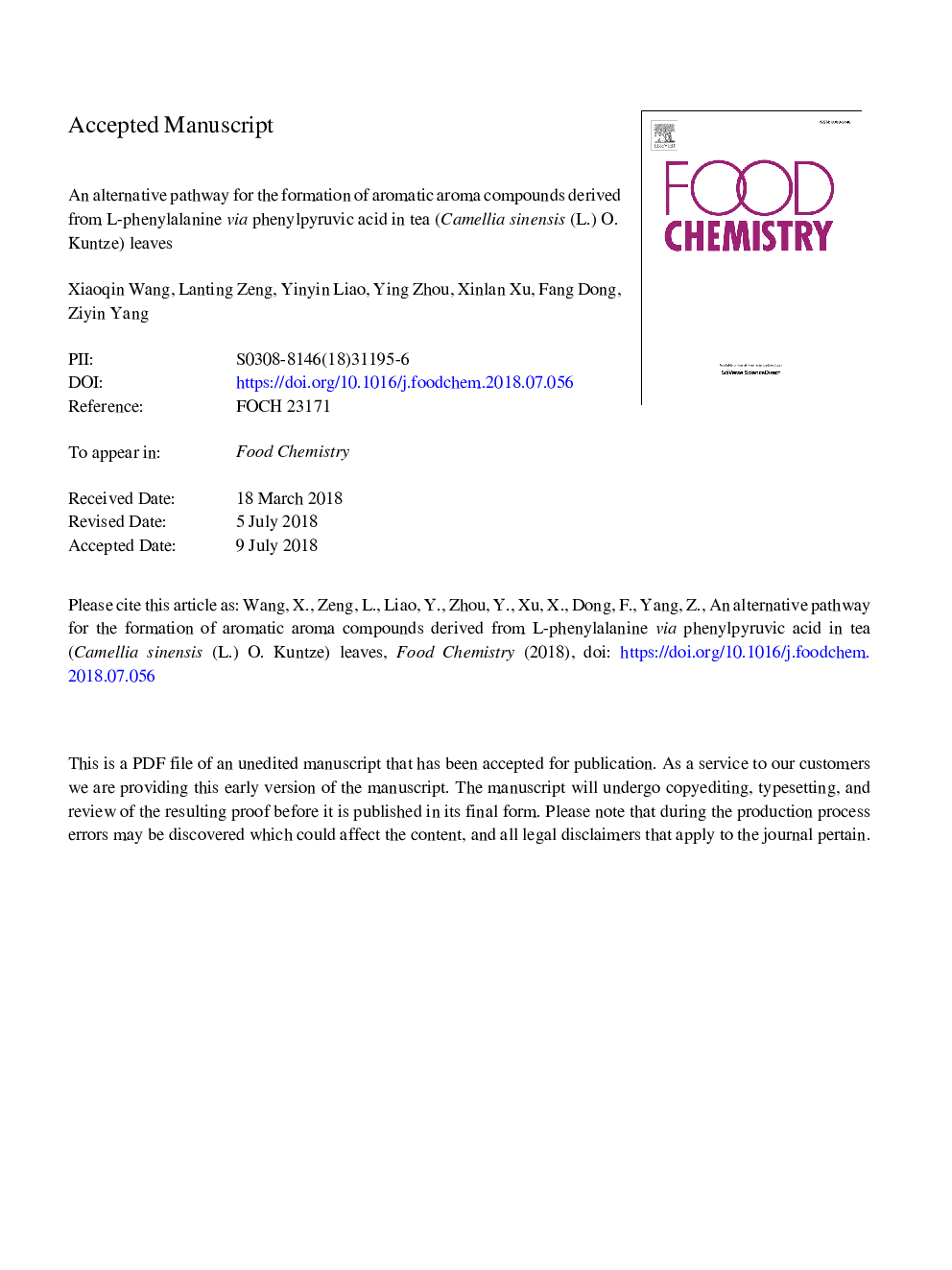| Article ID | Journal | Published Year | Pages | File Type |
|---|---|---|---|---|
| 7583828 | Food Chemistry | 2019 | 33 Pages |
Abstract
Aromatic aroma compounds contribute to flavor of tea (Camellia sinensis (L.) O. Kuntze) and they are mostly derived from l-phenylalanine via trans-cinnamic acid or directly from l-phenylalanine. The objective of this study was to investigate whether an alternative pathway derived from l-phenylalanine via phenylpyruvic acid is involved in formation of aroma compounds in tea. Enzyme reaction with phenylpyruvic acid showed that benzaldehyde, benzyl alcohol, and methyl benzoate were derived from phenylpyruvic acid in tea leaves. Feeding experiments using [2H8]l-phenylalanine indicated that phenylpyruvic acid was derived from l-phenylalanine in a reaction catalyzed by aromatic amino acid aminotransferases (AAATs). CsAAAT1 showed higher catalytic efficiency towards l-phenylalanine (pâ¯â¤â¯0.001) while CsAAAT2 showed higher catalytic efficiency towards l-tyrosine (pâ¯â¤â¯0.001). Both CsAAATs were localized in the cytoplasm of leaf cells. In conclusion, an alternative pathway for the formation of aromatic aroma compounds derived from l-phenylalanine via phenylpyruvic acid occurred in tea leaves.
Keywords
SDS2-aminoindan-2-phosphonic acidVPBsSPMEN-methyl-N-(trimethylsilyl)-trifluoroacetamideMSTFAUPLC-QTOF-MSPLPPVPPDTTAIPGC–MSPhenylpyruvic acidsolid-phase microextractiondithiothreitolsodium dodecyl sulfategas chromatography–mass spectrometryAromaVolatilePhenylalaninePyridoxal phosphatepolyvinylpolypyrrolidoneTEACamellia sinensis
Related Topics
Physical Sciences and Engineering
Chemistry
Analytical Chemistry
Authors
Xiaoqin Wang, Lanting Zeng, Yinyin Liao, Ying Zhou, Xinlan Xu, Fang Dong, Ziyin Yang,
